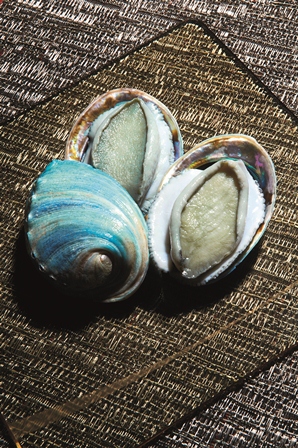Royal repast
The succulent and sweet flesh of abalone makes this marine mollusc the crown jewel of the sea.

Abalone can be purchased fresh, canned or dried. Among them, dried abalone has the most intense taste as all the flavours are locked in through a complex process where the abalone is hang-dried, salted, boiled, smelted, and hang-dried again. According to Cantonese chef Chan Shun Wong of Peach Blossoms at Marina Mandarin Singapore, dried abalone commands the highest prices and the best are usually imported from Japan. But Chan adds that after the Japan tsunami this year, dried abalone has become very rare and expensive, and there are very few suppliers importing this into Singapore. These dried varieties need to be soaked in water for 24 hours to soften before they can be cooked; avoid oil during the soaking process as this may cause the abalone to expand less than it should. Common preparation methods include simmering in soups or braising for two to three days before serving them whole or in slices with a savoury topping sauce.
When dealing with fresh abalone still nestled on its shell, give it a good wash to get rid of any sand particles near the mouth area. Pry it from its opalescent carapace and peel away any innards-like matter encircling the large central muscle and discard. The abalone is now clean and ready to be cooked.
CHILLED MARINATED ABALONE
Serves 2-3
Prep time 1 day (including overnight refrigeration)
pinch of salt
pinch of chicken bouillon powder
pinch of sugar
2 star anise
1 stick cinnamon
10g ginger, sliced
1 spring onion
20g crispy fried onion (available at most supermarkets)
600ml cold water
1 can abalone, sliced
- Mix all ingredients (except the abalone) with the water.
- Once combined, add the abalone.
- Chill overnight in the refrigerator and serve cold.
Chan says: “Abalone is usually eaten warm, so I chose to chill it to give a refreshing twist to the usual. You need to marinate overnight for the flavours to seep in.”
Excerpt from the January issue of epicure.
SHARE

















 SUBSCRIBE
SUBSCRIBE